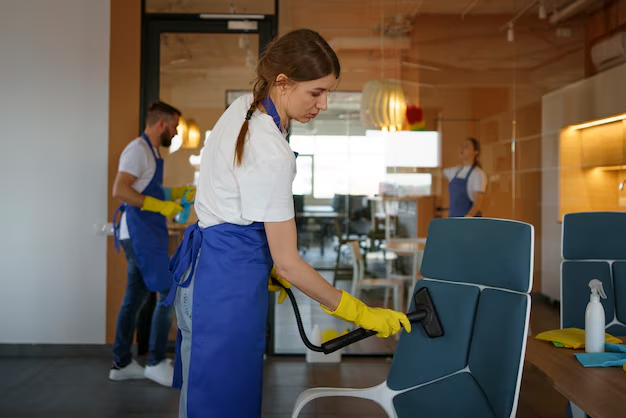
In the dynamic healthcare landscape, cleanliness is not just a matter of aesthetics; it’s crucial to ensuring patient safety and preventing the spread of infections. Healthcare facilities, including hospitals, clinics, and nursing homes, face unique cleaning challenges due to the constant influx of patients, infectious pathogens, and stringent regulatory standards. In this article, we delve into the importance of infection control and patient safety measures in healthcare cleaning and explore practical strategies to tackle these challenges in Florida’s healthcare facilities.
In healthcare settings, where vulnerable patients with compromised immune systems are treated, the risk of healthcare-associated infections (HAIs) is significantly heightened. Contaminated surfaces and medical equipment can serve as reservoirs for pathogens such as bacteria, viruses, and fungi, leading to potentially life-threatening infections. Proper cleaning and disinfection protocols are essential for breaking the chain of transmission and protecting patients, healthcare workers, and visitors from harm.
Cleaning healthcare facilities is a challenging feat. High-traffic areas such as waiting rooms, patient wards, and operating theaters require constant attention to maintain cleanliness and prevent spreading infections. Moreover, healthcare cleaning involves more than removing visible dirt and grime; it requires thorough disinfection of surfaces using EPA-approved disinfectants that are effective against a broad spectrum of pathogens, including multidrug-resistant organisms (MDROs) like MRSA and C. difficile.
Healthcare cleaning must adhere to stringent regulatory standards set forth by organizations such as the Centers for Disease Control and Prevention (CDC), the Occupational Safety and Health Administration (OSHA), and the Healthcare Infection Control Practices Advisory Committee (HICPAC). These standards outline specific guidelines for cleaning, disinfection, and sterilization procedures to minimize the risk of HAIs and ensure a safe environment for patients, staff, and visitors. Non-compliance with these standards can result in severe consequences, including fines, lawsuits, and damage to reputation.
Effective cleaning in healthcare facilities requires specialized techniques and equipment tailored to the environment’s unique needs. For example, high-touch surfaces such as doorknobs, light switches, and bed rails require frequent disinfection using microfiber cloths and hospital-grade disinfectants to remove pathogens effectively. Additionally, advanced technologies such as ultraviolet (UV) light disinfection systems and electrostatic sprayers can supplement traditional cleaning methods to achieve higher levels of disinfection and reduce the risk of cross-contamination.
Successful healthcare cleaning relies on collaboration between cleaning professionals and healthcare staff. Cleaning teams must work closely with nurses, infection control specialists, and facility managers to identify high-risk areas, develop cleaning schedules, and implement best practices for infection prevention. Education and training programs for cleaning staff are also essential to ensure competency in proper cleaning techniques, chemical handling, and infection control protocols.
In addition to infection control, healthcare cleaning should also consider environmental sustainability. Green cleaning practices, such as using eco-friendly cleaning products and reducing water and energy consumption, can minimize the environmental impact of cleaning operations while promoting a healthier indoor environment for patients and staff. Furthermore, incorporating antimicrobial surfaces and materials with self-disinfecting properties can help maintain cleanliness and reduce the need for frequent cleaning and disinfection.
Cleaning healthcare facilities is a complex and demanding task that requires expertise, diligence, and collaboration. By prioritizing infection control and patient safety measures, healthcare cleaning professionals play a vital role in safeguarding the health and well-being of patients and staff. As a trusted partner in healthcare cleaning, we are committed to providing innovative solutions and best-in-class services to meet Florida’s healthcare facilities’ unique needs. Let us strive for a cleaner, safer, and healthier future for all.







